Table of Contents
1 Introduction
This tutorial document will guide you how to setup a coastal hydrodynamic model by using the EFDC_Explorer (EE). It will cover preparation of the necessary input files for the EFDC model and visualization of the output by using the EFDC_Explorer (EE) Software.
The data used for this tutorial are from Tra Khuc Estuary in Vietnam. All files for this tutorial are found in Data folder downloadable from the EEMS website.
Before going to each session, let us first introduce the EE main form in order to better understand our explanation hereafter. Figure 1 2381073 is the main form of EFDC_Explorer or EE User Interface. The functions of individual icons are described in Knowledge Base.
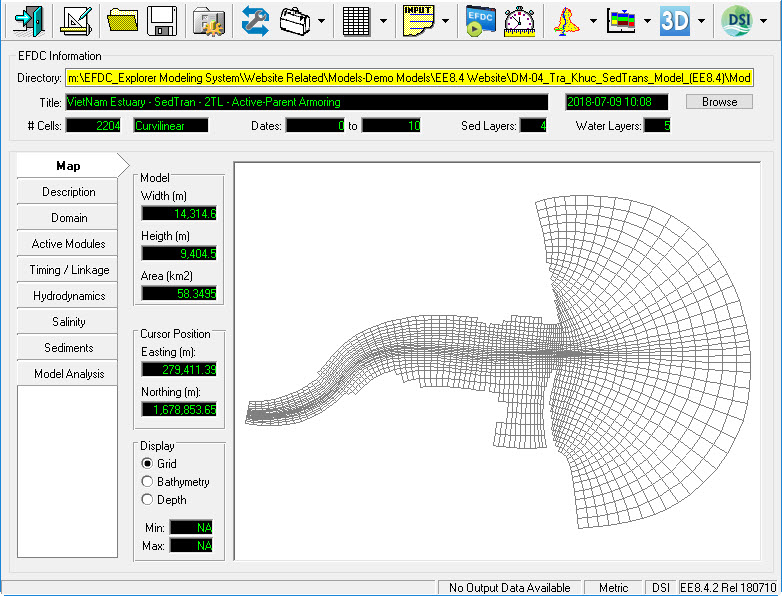
Figure 1 EFDC Explorer main form.
2 Create a New Grid
This section will guide you in how to create a new simple gird with EFDC_Explorer. For a complicated grid the user is recommended to use specialized grid generation software such as CVLGrid or Delft3D-RGFGRID.
Tra Khuc Estuary in Quang Ngai province, Vietnam is chosen as the example of building a 3D coastal model in EE.
The gird generation process includes following steps:
- Open EE
- Click Generate New Model icon as
 on the main menu of EE interface. Then Generate EFDC Model frame appears shown in Figure 22381073
on the main menu of EE interface. Then Generate EFDC Model frame appears shown in Figure 22381073 - Select CVLGrid in the Grid Type. The user should click the Browse button to select grid file name as Trakhuc.cvl in Grid folder sas shown in Figure 2 2381073. In the other hand, EE also supports the user to import various format of grid file with the option Import Grid.
- Click Generate button in Figure 22381073 to finish. A dialog will pop up to show the grid information (see Figure 32381073).
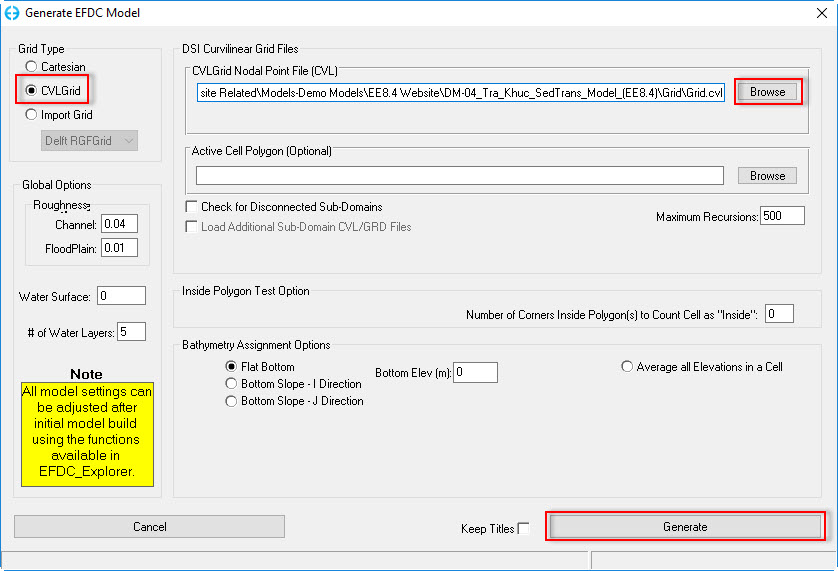
Figure 2 Generate EFDC Model form.
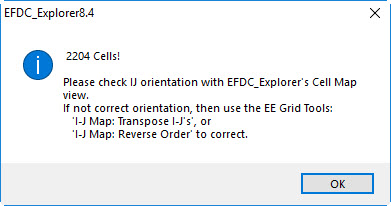
Figure 3 New created grid information.
5. Save the model by selecting this button  and create a new directory as shown in Figure 4 2381073.
and create a new directory as shown in Figure 4 2381073.
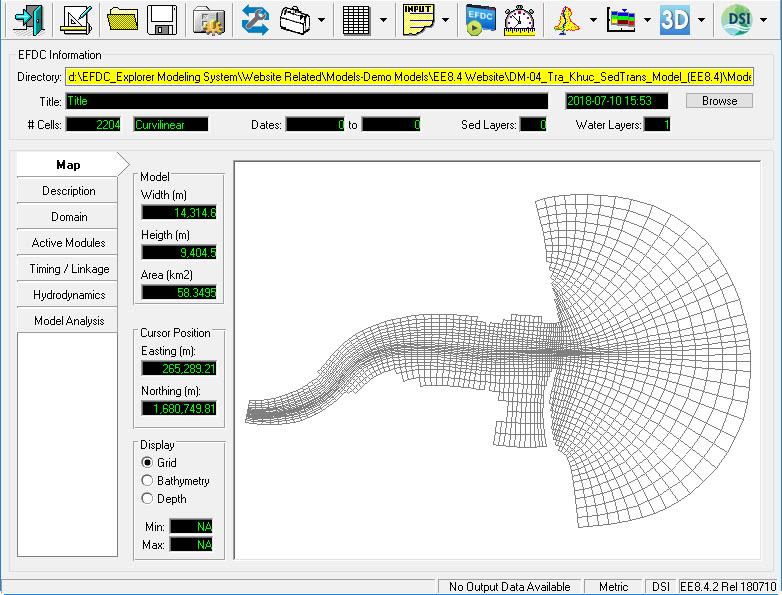
Figure 4 New model saved.
3 Assigning the Initial Conditions
This section will guide you in how to assign the initial conditions such as the bathymetry, water level and bottom roughness.
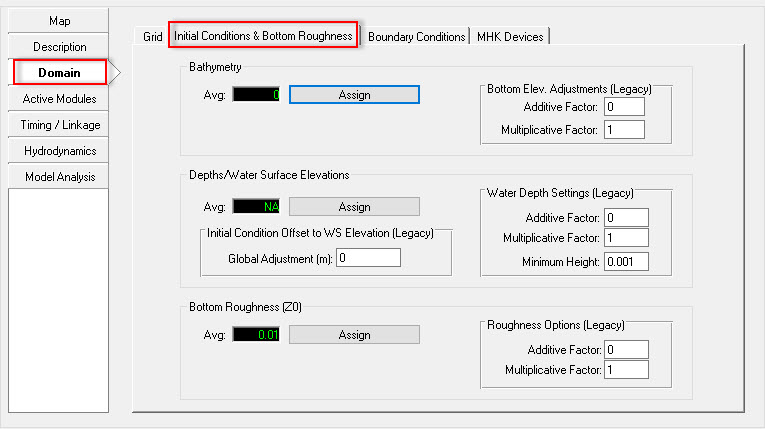
Figure 5 Assigning the initial conditions.
3.1 Assigning the Initial Bottom Conditions
- Select the Domain/Initial Conditions & Bottom Roughness and click the Assign button (see Figure 5 2381073).
- A polyline file is used to define the area to assign the bathymetry data. To assign this browse in the Poly File form to "Domain.p2d".
- Next browse to the bathymetry data file in the Data File form. This bathymetry file is simply a general xyz format.
- There are a number of options for the for user to modify the assigned. In this case, we choose in the Bathymetry Assignment Options we select Interpolated Data and Both. This will take the nearest neighbor data points to interpolate for the cells where there is no data coverage.
- Click the Apply button to take the effect before hitting the Done button (see Figure 62381073)
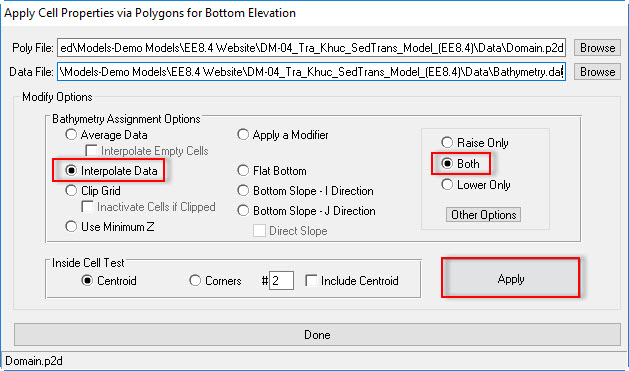
Figure 6 Assigning the bathymetry.
3.2 Assigning the Depth/Water Surface Elevations
The next step is to assign the initial depth or water surface elevations. There are two options for setting the surface water elevation which are Use Constant and Use Point Measurements/Gridded Data.
- Click Assign button
- Browse in the Poly File form to "Domain.p2d"
- Next, browse to the water surface elevation data file "IC_WSEL.dat" in the Data File form.
- Checked on Use Point Measurements/Gridded Data
- The user click Apply button then click Done button to finish.
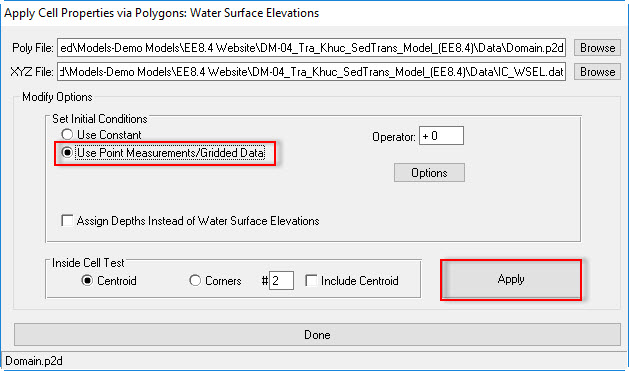
Figure 7 Assigning water surface elevation.
3.3 Assigning the Bottom Roughness (Z0)
- Click the Assign button in the Bottom Roughness (Z0) box (Figure 52381073).
- Browse in the Poly File form to "Domain.p2d"
- Next, browse to the bottom roughness data file "IC Bot Roughness.dat" in Data folder in the Data File form.
- Checked on Use Point Measurements/Gridded Data
- Click the Apply button before hitting the Done button as shown in Figure 8 2381073.
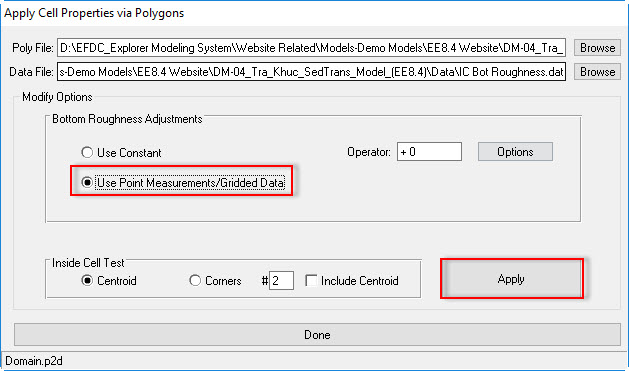
Figure 8 Assigning bottom roughness.
4 Assigning the Boundary Conditions
This section will guide you how to prepare for the boundary conditions and assign it to the model cell configuration. In this coastal case there are two flow boundaries; one is river discharge from the upstream and the other is tidal level. Thus, we should prepare two time series of inflow and tidal level boundaries for this particular case. In order to set a boundary time series the steps outlined below should be taken.
4.1 Preparing the Flow Boundary.
- Select the Domain/Boundary Conditions. (See Figure 9 2381073).
- Click to the E button
 which is next to Flow to edit the flow boundary. (Figure 92381073)
which is next to Flow to edit the flow boundary. (Figure 92381073) - Enter the Number of Series into the box which in this case is 1.
- Give a Title for associated time series, in this case "River".
- Click Import Data button, browse to "BC_Flow.dat" file in Data folder
- Select EE DAT or WQ Data format then click OK button. (See Figure 10 2381073).
- Enter "-1" in Import Data form then click OK button. (See Figure 11 2381073).
Click to the Current button  to view the current time series. If there are a number of layers then check Sum Layers to show total flow. (See Figure 11 2381073). Close timeseries data plot
to view the current time series. If there are a number of layers then check Sum Layers to show total flow. (See Figure 11 2381073). Close timeseries data plot
Click OK button in Data Series: Flow form to finish editing the boundary time series.

Figure 9 Assigning flow boundary conditions.

Figure 10 Editing the boundary time series (01).
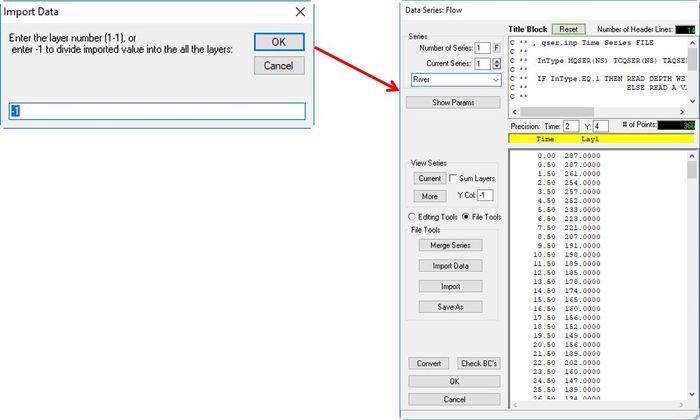
Figure 11 Editing the boundary time series (02).
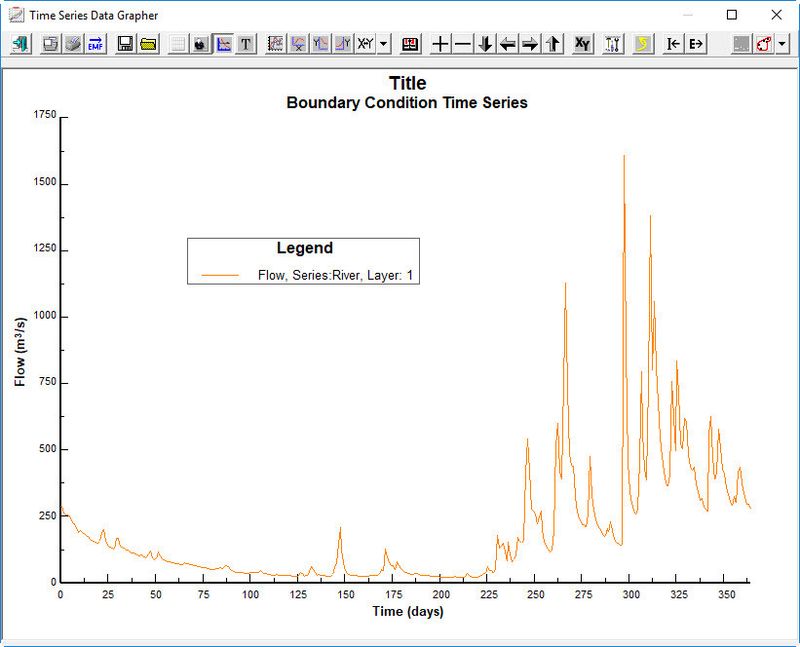
Figure 12 Flow time series plot.
4.2 Preparing the Tidal Level Boundary.
- Click to the E button
 which is next to Water Level (See Figure 12 2381073)
which is next to Water Level (See Figure 12 2381073) - Enter the Number of Series, which is 1 for this case (see Figure 13 2381073)
- Enter the Title of Series as "Tides"
- Open "BC_Water Level.dat" file in Data folder, the copy and paste into the Data Series: Water surface form.
- Click Current button in the form to see the timeseries plot (see Figure 14 2381073). Close timeseries data plot.
- Click OK to finish.
Another option for setting the open boundary is the Harmonic Boundary Series (Harmonic Boundary Series)
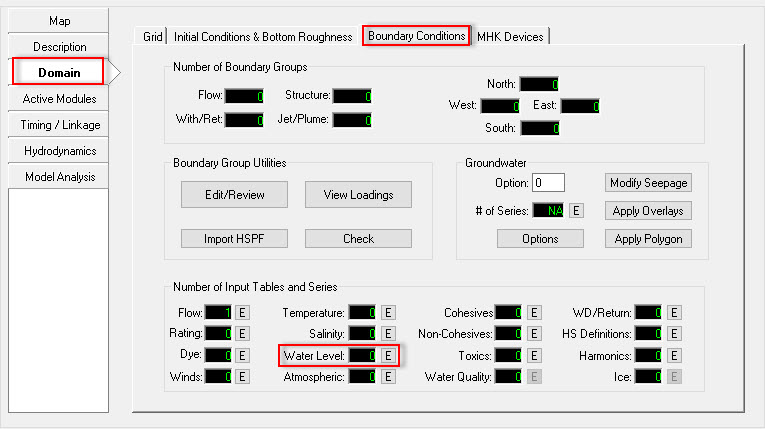
Figure 12 Assigning tidal boundary conditions.
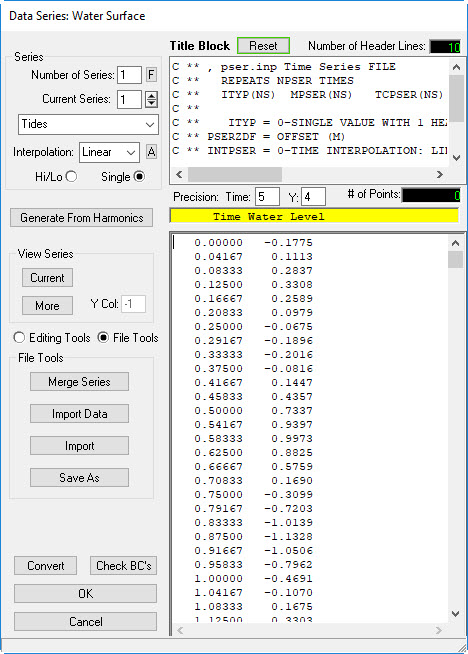
Figure 13 Preparing the tidal boundary series.
...


















